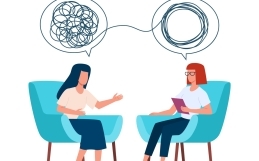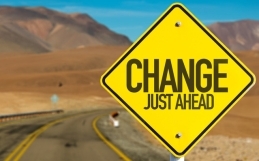Many individuals seek quick solutions and universal advice to overcome their challenges. However, personal development is not a destination but an ongoing journey of self-improvement and self-discovery. It’s not a process that can be expedited through a handful of therapy sessions but rather a lifelong pursuit of becoming the best version of oneself. After all, what could be more important than that?
Personal development is a continuous process that makes life all the more enjoyable. We are constantly evolving beings, each with our unique set of challenges. These challenges can be viewed as opportunities for growth and learning rather than problems to be solved and eradicated.
Personal development encompasses enhancing one’s skills, abilities, awareness, and overall quality of life. This improvement can manifest in various ways — from learning new languages to developing emotional intelligence. While external factors like career advancement or relationship transitions can stimulate personal development, it is primarily fueled by an internal drive for self-improvement.
However, where can we develop ourselves the most? Believe it or not, it is through our most important relationships. That, combined with our internal drive for self-improvement, is one of the best ways to improve ourselves. We should not understand individuals in isolation but as part of their family system. A family is an emotional unit that significantly influences an individual’s behavior and development. For instance, understanding one’s familial relationships can help identify patterns of emotional reactivity, a crucial aspect of personal growth. By recognizing these patterns, individuals can strive towards greater emotional maturity and reduced reactivity to the dynamics of their family systems. You can also become aware of who you want to be within your most important relationships.
Consider Beth, a young professional who often conflicts with her colleagues. She had a short temper and found it challenging to handle criticism, constantly engaging in heated exchanges. Realizing the need for change, Beth decided to focus on personal development. She began by seeking to understand her emotional reactivity and its roots in her early family relationships. Beth realized her defensiveness and inability to handle criticism were patterns she had learned in her childhood home, where expressing disagreement was often met with hostility. With this insight, Jane committed to changing her behavior. She started practicing active listening, responding rather than reacting, and developing empathy towards her colleagues. Over time, she noticed a distinct change in her interactions, reflecting her growth and maturity within her professional relationships.
Brain Plasticity and Personal Development
Recent research on brain plasticity has given us a new perspective on personal development. Brain plasticity, or neuroplasticity, is the brain’s ability to reorganize itself by forming new neural connections throughout life. This neuroscientific concept suggests that our brains are not rigidly hardwired as once thought but are dynamic and adaptable.
Brain plasticity means that our habits, behaviors, and thought patterns can change over time, reinforcing the idea that personal development is an ongoing process. With consistent effort, we can reshape our brains to develop new skills, adopt healthier habits, and overcome limiting beliefs.
The Lifelong Journey
Personal development is not a destination but a continuous path through self-awareness of what needs to change. It requires commitment, effort, and patience, along with a willingness to see what we are up against in our most profound relationships. Here are some steps to help you on your journey:
1. Self-awareness: Begin by understanding yourself better. Recognize your strengths, weaknesses, values, and beliefs. Assess how you respond to different situations and what triggers certain behaviors in you. This understanding is the first step towards positive change. Keep a journal to record your thoughts, feelings, and reactions, and review it regularly for patterns and areas of improvement.
2. Understanding Your Family System: By viewing yourself as a part of an interconnected system, you can identify how your family dynamics have shaped your behaviors, emotions, and thought patterns. Understanding and addressing these familial patterns can lead to improved communication, healthier boundaries, and reduced emotional reactivity within the family system. Working on yourself involves acknowledging the interactive nature of personal development within your family context.
3. Goal Setting: Identify what you want to improve or achieve. Ensure your goals are SMART – Specific, Measurable, Attainable, Relevant, and Time-bound. Once you’ve set your goals, devise a clear plan of action to bring them to fruition. Detail the steps you need to take, resources you may require, and potential obstacles you may encounter. Regularly assess your progress and adjust your plan if necessary, understanding that flexibility is critical to achieving your goals.
4. Skill Acquisition: Learn and develop the necessary skills to achieve your goals. This could involve formal education, online courses, reading, or practicing a specific skill. Suppose your goal is to improve your public speaking skills. Start by identifying areas you wish to enhance, such as articulation, body language, or audience engagement. Next, look for resources that can aid in your development. This could involve signing up for a public speaking course, reading books on the topic, or watching online tutorials.
5. Reflection and Evaluation: Regularly reflect on your progress. Consider what’s working, what isn’t, and how you can adjust your approach. For example, your goal might be to improve communication within your romantic relationship. After implementing changes for a month, you might reflect on what progress has been made. You may notice that while you’re having fewer arguments, you still struggle to express your feelings clearly. This reflection indicates that while the changes have been beneficial, there’s still room for improvement. The evaluation might lead you to seek resources focused explicitly on expressing emotions effectively. Remember, reflection and evaluation are ongoing processes crucial for continuous growth and development in any aspect of life.
6. Persistence: Change takes time. Stay committed to your personal development journey, even when it gets tough. Consider finding a therapist or joining a support group to help you stay persistent in your growth. Try not to give up and remember it is okay to take breaks. Development doesn’t happen in a straight line; there will be setbacks, and that is typical.
Personal development is a lifelong journey. It’s about being open to change and growth, understanding your family system, leveraging the power of brain plasticity, and consistently working towards becoming the best version of yourself. Remember, every step, no matter how small, brings you closer to your personal growth goals. And no matter how much work you have done on yourself, we all go backward at times, and the critical part is that you get yourself back up.
Did you enjoy reading this article?
Once a week I send out a newsletter with new articles and unique content for readers. It is my way of staying in touch with you and giving you free advice based on some important topics.
Click here to sign up for my newsletter.





